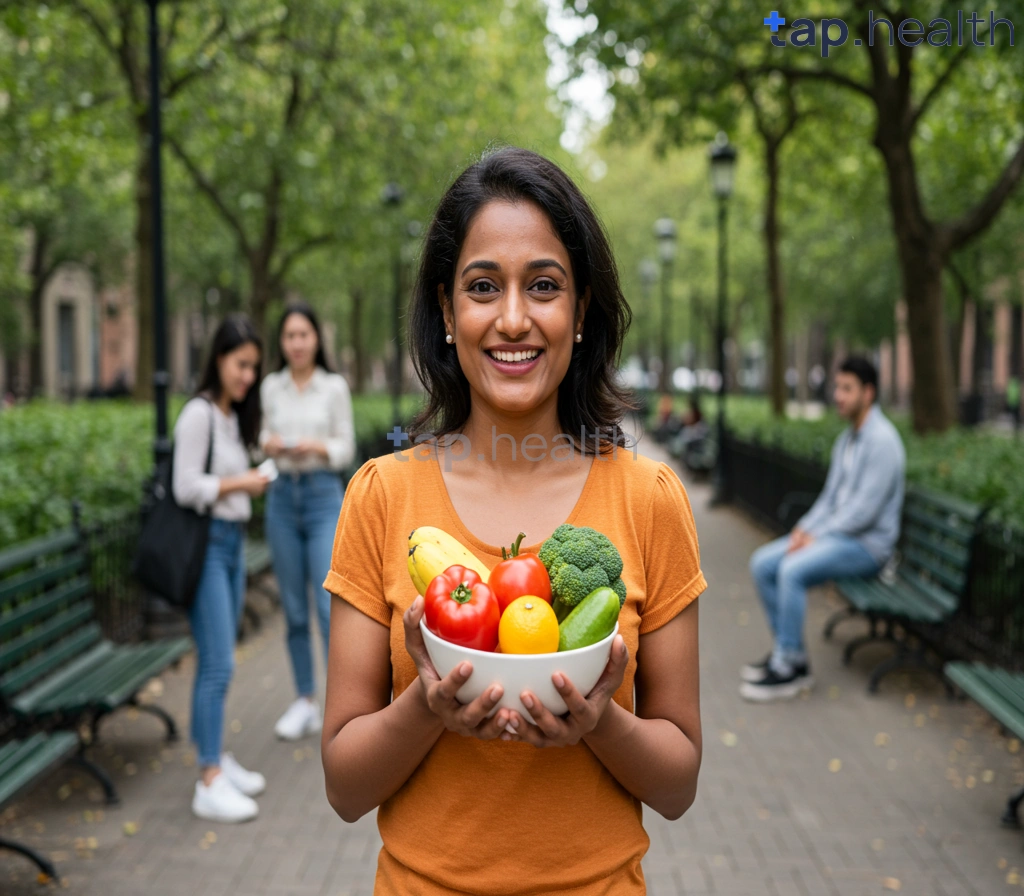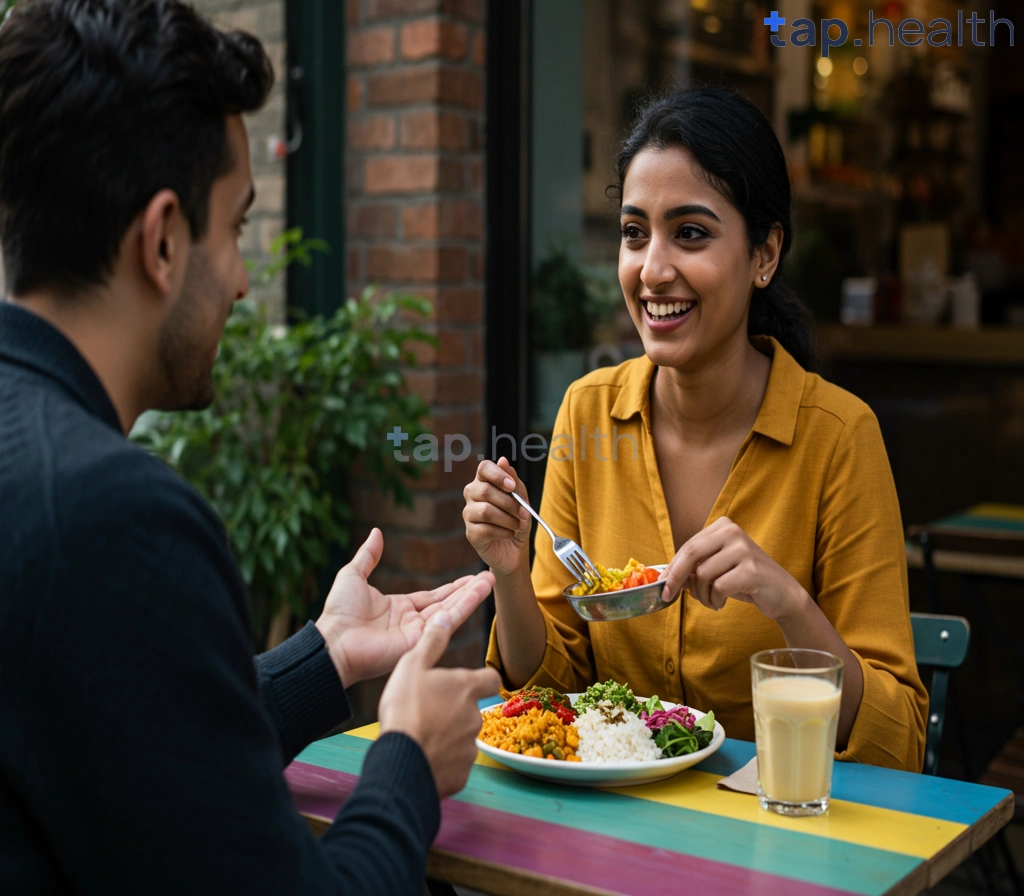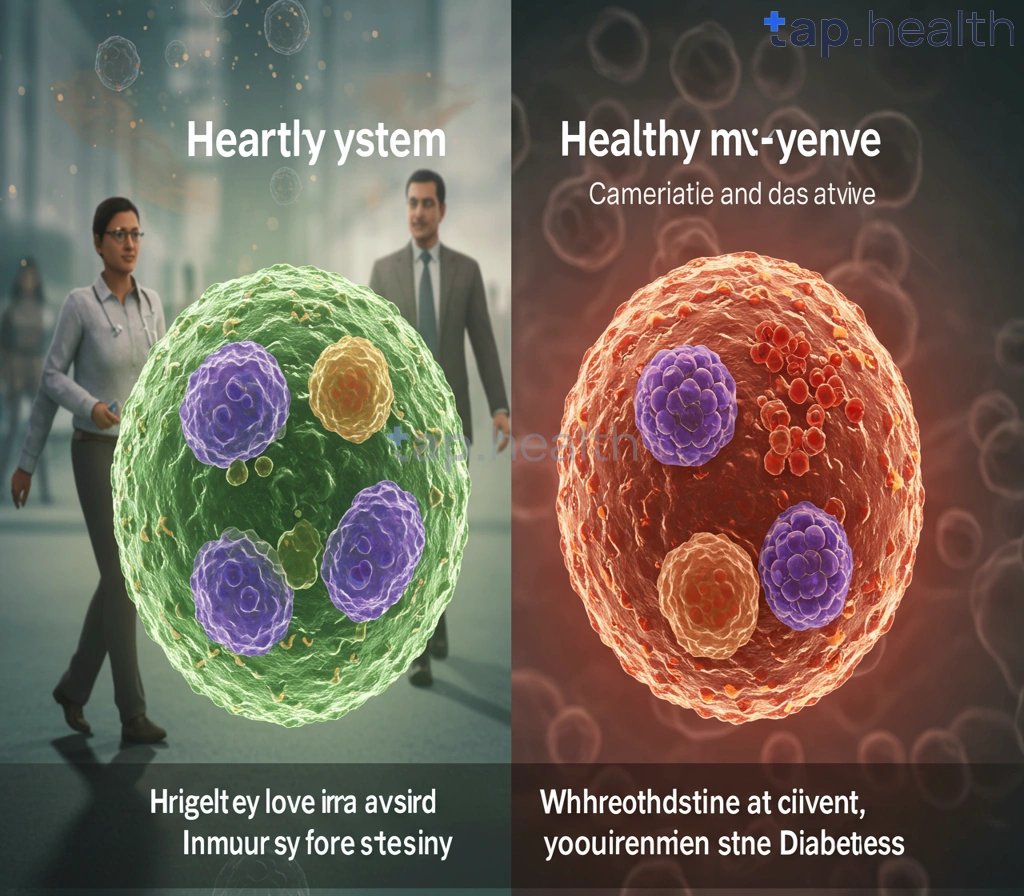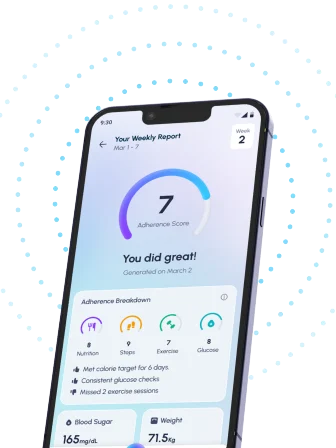Table of Contents
- Conquer Sugar Cravings: A Diabetes Guide
- Managing Blood Sugar: Tips to Curb Cravings
- Understanding Sugar Cravings & Diabetes
- Diabetes Diet: Beat Sugar Cravings Naturally
- Recipe Ideas: Delicious, Diabetes-Friendly Snacks
- Frequently Asked Questions
- References
Are you tired of battling those relentless sugar cravings? Do you feel like they’re sabotaging your efforts to manage your diabetes? You’re not alone! Millions struggle with this daily, but it doesn’t have to control your life. In this Conquer Your Sugar Cravings: A Diabetes Health Minute, we’ll explore practical strategies and simple tips to help you regain control and enjoy a healthier, happier you. We’ll uncover the root causes of your cravings and provide actionable steps you can implement immediately to start feeling better. Let’s conquer those cravings together!
Conquer Sugar Cravings: A Diabetes Guide
Excess sugar consumption significantly increases the risk of developing diabetes, a concerning fact given India’s high per capita sugar consumption of 20 kg per year. This alarming statistic highlights the urgent need for effective strategies to manage sugar cravings, particularly in India and other tropical countries where sugary treats are prevalent. Conquering these cravings is crucial for preventing or managing diabetes. For those already managing the condition, consider reading our guide on Managing Diabetes as You Age: Challenges and Solutions for additional support as you navigate this journey.
Understanding Your Cravings
Sugar cravings often stem from underlying factors beyond simple indulgence. Stress, poor sleep, and an unbalanced diet can all trigger intense sugar desires. Recognizing these triggers is the first step towards breaking the cycle. In tropical climates, readily available fresh fruits offer a naturally sweet alternative that can help satisfy cravings without the harmful effects of refined sugar.
Practical Strategies for Success
Instead of reaching for sugary snacks, try incorporating these simple yet effective strategies:
* Prioritize protein and fiber: These nutrients promote satiety, reducing overall cravings. Include lentils, chickpeas, and whole grains in your diet for sustained energy.
* Manage stress effectively: Practice yoga, meditation, or deep breathing exercises to reduce stress-induced sugar cravings.
* Prioritize sleep: Aim for 7-8 hours of quality sleep each night. Lack of sleep disrupts hormone balance, leading to increased cravings.
* Choose healthier alternatives: Opt for natural sweeteners like jaggery or honey in moderation and satisfy your sweet tooth with fruits rich in vitamins and fiber.
Taking Control in Tropical Climates
In many tropical countries, the abundance of fresh, naturally sweet fruits provides a delicious and healthy way to manage sugar cravings. Embrace the local bounty! Remember, small changes in your diet and lifestyle can make a significant difference in managing your blood sugar levels and preventing or managing diabetes. For more effective strategies, check out our article on 10 Proven Tips to Effectively Manage Diabetes | Simple Guide. Consult a healthcare professional for personalized guidance and support tailored to your specific needs and region.
Managing Blood Sugar: Tips to Curb Cravings
Sugar cravings are a common struggle, especially in regions like India and other tropical countries where sweet treats are a significant part of the culture. But did you know that daily consumption of sugary beverages raises your diabetes risk by a staggering 26%? This highlights the crucial link between sugar intake and blood sugar management, making it essential to understand how to control those cravings.
Understanding Your Cravings
Many factors contribute to sugar cravings, including stress, hormonal fluctuations, and even sleep deprivation. In tropical climates, the readily available and often inexpensive sugary drinks and snacks can exacerbate these tendencies. Recognizing your triggers is the first step towards breaking the cycle. Keep a food diary to identify patterns and situations that lead to intense cravings.
Strategies for Success
Instead of reaching for sugary sodas or sweets, try these simple yet effective strategies:
* Prioritize protein and fiber: These nutrients promote satiety, keeping you feeling full and reducing the urge to snack. Incorporate lentils, chickpeas, and various fruits abundant in tropical regions into your diet.
* Hydrate properly: Sometimes thirst is mistaken for hunger. Drink plenty of water throughout the day, especially before meals.
* Choose healthy alternatives: Satisfy your sweet tooth with naturally sweet fruits like mangoes or papayas, common and readily available across many Indian and tropical countries.
* Manage stress effectively: Practice yoga, meditation, or other relaxation techniques to reduce stress hormones that can trigger cravings.
Taking Control in Your Region
In India and tropical countries, where access to sugary drinks and snacks is prevalent, proactive strategies are crucial. Make conscious choices at the grocery store, opting for healthier alternatives. Engage in mindful eating practices, savoring your food rather than rushing through meals. By taking control of your sugar intake, you’re taking a significant step towards better blood sugar management and a healthier lifestyle. For more information on building lasting healthy habits, check out our article on How to Build Habits That Help Control Blood Sugar Levels. Understanding why your blood sugar might spike in the morning can also be helpful; learn more in our article, Why Blood Sugar Spikes in the Morning and How to Manage Them.
Understanding Sugar Cravings & Diabetes
Sugar cravings are a common struggle, especially for individuals managing diabetes, particularly in regions like India and other tropical countries where sweet treats are a significant part of the culinary landscape. These cravings can be intensely difficult to manage, but understanding their root cause is the first step towards conquering them. Often, they are linked to fluctuating blood sugar levels. When blood sugar drops, the body signals a need for a quick energy boost, leading to intense sugar cravings. This is further complicated by the fact that many traditional Indian and tropical desserts are high in refined sugars and carbohydrates.
Managing Blood Sugar for Craving Control
One key aspect of managing these cravings is maintaining consistent blood sugar levels. This involves careful monitoring of carbohydrate intake, focusing on complex carbohydrates over refined sugars. Remember, a balanced diet is crucial, and for most people with diabetes, aiming for roughly 45–60 grams of carbs per meal is a good starting point, though individual needs vary. Consult your doctor or a registered dietitian to determine the optimal carbohydrate intake for your specific needs and health condition. This personalized plan should also account for your cultural dietary habits and preferences. Understanding why diabetes makes you hungry can also be helpful in managing cravings. You can learn more by reading our article on Why Does Diabetes Make You Hungry?
Practical Strategies for Indian and Tropical Contexts
Instead of indulging in sugary sweets, consider healthier alternatives readily available in your region. Fruits like mangoes (in season), bananas, or papayas offer natural sweetness and essential nutrients. Spices like cinnamon and cardamom, commonly used in Indian cuisine, can also help regulate blood sugar levels and satisfy sweet cravings. Prioritize whole grains, such as brown rice or millets, over refined grains found in many processed foods. Remember, small, frequent meals can help prevent significant blood sugar fluctuations and reduce the likelihood of intense cravings. It’s also important to understand the link between diabetes and obesity, as weight management plays a significant role in blood sugar control. For more information, check out our article on Understanding the Link Between Diabetes and Obesity.
Taking Control
By understanding the connection between blood sugar and cravings, adopting a balanced diet rich in whole foods, and incorporating region-specific, healthy alternatives, you can effectively manage your sugar cravings and improve your overall diabetes management. Consult a healthcare professional for personalized advice tailored to your individual needs and cultural context.
Diabetes Diet: Beat Sugar Cravings Naturally
Managing diabetes in hot and humid climates like those prevalent in India and other tropical countries presents unique challenges. One significant hurdle is combating intense sugar cravings, often exacerbated by heat and dehydration. But conquering these cravings is achievable through natural methods that support healthy blood sugar levels. Remember, ideal pre-meal blood sugar should be between 80–130 mg/dL, and post-meal levels should remain below 180 mg/dL.
Understanding the Craving
Sugar cravings often stem from fluctuating blood glucose levels. When blood sugar drops, your body signals a need for a quick energy boost, leading to intense cravings for sugary foods and drinks. Common culprits in tropical regions include readily available, sweet juices and desserts. Fighting these cravings requires a proactive approach to maintain stable blood sugar.
Natural Strategies for Control
Prioritize incorporating fiber-rich foods like moong dal cheela (a South Asian lentil pancake) or idli (steamed rice cakes) into your diet. These foods provide sustained energy release, preventing blood sugar spikes and subsequent crashes. Increase your intake of spices like cinnamon and turmeric, known for their potential blood sugar-regulating properties. Stay hydrated by drinking plenty of water, especially important in tropical climates, as dehydration can worsen sugar cravings. Consider incorporating mindful eating practices, paying attention to your body’s hunger cues and avoiding emotional eating.
Regional Considerations
Many traditional Indian and tropical recipes offer naturally sweet alternatives to processed sugars. Explore options like fresh fruits, particularly those with lower glycemic index like guava or amla (Indian gooseberry). Remember to consult with your doctor or a registered dietitian to create a personalized diabetes management plan that suits your specific needs and dietary preferences, taking into account the climatic conditions of your region. Taking control of your sugar cravings is a key step towards managing your diabetes effectively. For more tips on effective management, check out 10 Proven Tips for Effective Diabetes Management. And if weight loss is a goal alongside managing your blood sugar, you might find our guide on How to Lose Weight with Diabetes Diet Plan helpful.
Recipe Ideas: Delicious, Diabetes-Friendly Snacks
Sweet Treats Without the Sugar Rush
Conquering sugar cravings is a crucial part of managing diabetes, especially in regions like India and other tropical countries where sweet treats are a common part of the diet. Remember, up to 80% of Type 2 diabetes cases can be delayed or prevented through lifestyle changes, and that includes mindful snacking. Here are some delicious and diabetes-friendly options that are both satisfying and healthy:
Savory & Satisfying
Instead of reaching for sugary snacks, opt for savory alternatives. A handful of roasted chickpeas seasoned with turmeric and chili powder provides protein and fiber, keeping you full and preventing blood sugar spikes. Alternatively, a small bowl of mixed nuts (almonds, walnuts, cashews) offers healthy fats and essential nutrients. In many Indian households, moong dal cheela (savory pancakes made from mung beans) are a nutritious and satisfying option.
Fruity & Refreshing
Fruit is naturally sweet, but portion control is key. A small bowl of berries (strawberries, blueberries, raspberries) or a medium-sized apple provides natural sweetness and fiber. Consider adding a sprinkle of cinnamon, which can help regulate blood sugar levels. In tropical climates, fresh mango slices (in moderation) or a small portion of papaya can be refreshing options. Remember to always check your blood sugar levels after consuming any fruit.
Planning Ahead for Success
Preparing healthy snacks in advance is key to avoiding impulsive, unhealthy choices. Pack a small container of your favorite diabetes-friendly snack for work or outings. This proactive approach will help you stay on track with your diabetes management goals. Remember, consistent healthy choices are essential to managing your blood sugar levels effectively. For more ideas on creating delicious and healthy meals, check out our guide on Creating Diabetes-Friendly Dishes for the Holidays. And to discover even more excellent food choices, explore our list of the 20 Best Foods for People with Diabetes.
Frequently Asked Questions on Conquer Sugar Cravings | Diabetes Health Minute
Q1. What are the main causes of sugar cravings?
Sugar cravings often stem from underlying issues like stress, poor sleep, and an unbalanced diet, rather than simply wanting sweets.
Q2. How can I effectively manage my sugar cravings?
Strategies include prioritizing protein and fiber in your diet, managing stress through techniques like yoga and meditation, ensuring adequate sleep, and choosing healthier alternatives to satisfy your cravings.
Q3. What kind of diet is recommended to help control sugar cravings and blood sugar levels?
A balanced diet rich in whole foods and complex carbohydrates is recommended to maintain consistent blood sugar levels. This includes incorporating plenty of fruits, vegetables, and whole grains.
Q4. Are there any potential limitations or challenges to managing sugar cravings?
Managing sugar cravings requires consistent effort and lifestyle changes. It’s important to be patient with yourself and seek professional guidance if needed.
Q5. When should I consult a healthcare professional for help with my sugar cravings?
It’s always recommended to consult a healthcare professional for personalized advice, especially if you have diabetes or other health concerns. They can help you create a plan tailored to your specific needs and cultural context.
References
- A Practical Guide to Integrated Type 2 Diabetes Care: https://www.hse.ie/eng/services/list/2/primarycare/east-coast-diabetes-service/management-of-type-2-diabetes/diabetes-and-pregnancy/icgp-guide-to-integrated-type-2.pdf
- What is Diabetes: https://www.medschool.lsuhsc.edu/genetics/docs/DIABETES.pdf



